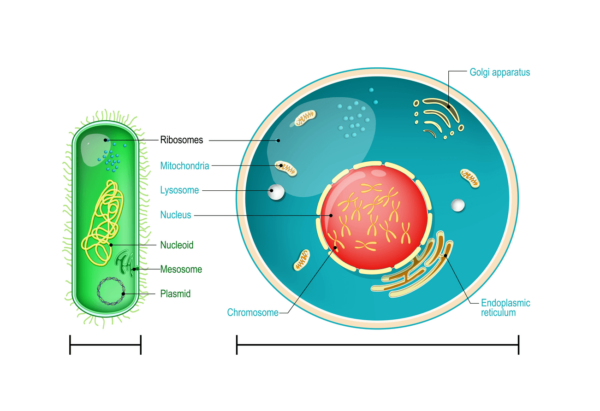Yeast, like any other protein-containing ingredient/food, can potentially cause an allergy if an individual has a sensitivity. While this is true, it is important to first understand that yeast in food applications is not considered a major allergen.
What are the major allergens?
According to the U.S. Food and Drug Administration, there are nine major food allergens. These include:
- Milk,
- Eggs,
- Fish,
- Crustacean shellfish,
- Tree nuts,
- Peanuts,
- Wheat,
- Soybeans,
- Sesame.
In the European Union, the list of major allergens is expanded and a list of 14 food allergens must always be declared if they are present in any food. The following are considered major allergens in the EU:
- Cereals containing gluten – wheat (such as spelt and Khorasan wheat), rye, barley, oats.
- Crustaceans, e.g., crabs, prawns, lobsters,
- Eggs,
- Fish,
- Peanuts,
- Soybeans,
- Milk,
- Nuts (almonds, hazelnuts, walnuts, cashews, pecan nuts, brazil nuts, pistachio nuts, macadamia/Queensland nuts),
- Celery,
- Mustard,
- Sesame seeds,
- Sulphur dioxide and sulfites (at concentrations of more than 10 mg/kg or 10 mg/L in terms of total sulfur dioxide) – used as a preservative,
- Lupin,
- Mollusks, e.g., mussels, oysters, squid, snails.
Dietary allergies happen because of the immune system’s response to certain dietary proteins. Any protein can trigger a potential allergy depending on the individual. Foods that contain concentrated amounts of a particular protein can cause a more severe reaction if consumed by an individual with an allergy to that food protein.
Noteworthy, yeast is not considered a major food allergen in the US or the EU.
What foods contains yeast?
Several food items contain yeast as yeast is used in food for a wide variety of purposes including as a leavening agent as well as a means to ferment foods. Some examples of food and drinks which contain yeast are indicated below.
-
Baked goods
One of the most common uses of yeast is for baked goods, which include many types of bread, pastries, pizzas, and other bakery items. Yeast is used in these items as a leavening agent and to provide texture and flavor.
-
Beer, wine, and alcoholic beverages
Many alcoholic beverages including beer and wine are fermented with yeast. Even though these products have alcohol they still contain yeast and yeast-derived molecules (like proteins), which may trigger some food allergies. However, allergies to the yeasts present in beer, wine, and cider are rare and often occur in polysensitized subjects. Note that many beers and wines are filtered and yeast-free.
-
Fermented food and beverages
Many different fermented food items are made with yeast including soy sauce, miso, and kombucha. If a food item is fermented there is a high chance, there is yeast in it.
What is a yeast allergy or intolerance?
First of all, it’s important to understand that yeasts belong to the fungi kingdom. Yeasts are found almost everywhere in the world, and many live in symbiosis with animals and plants. Some yeasts can grow in a wide variety of climates and temperatures from -5 to 50° C and even higher. Despite their ubiquity on Earth, allergies or intolerances to yeast are rare.
It is important to distinguish between an allergy and intolerance.
- A yeast allergy affects the immune system of an allergic individual where even small amounts can trigger a range of symptoms embedded in allergic reactions with topical up to systemic manifestation.
- Yeast intolerance typically only affects the digestive system of the affected individual, and their symptoms are significantly less serious than an individual with an allergy.
Yeast intolerance vs. gluten intolerance
It is also vital to point out that many people mistakenly believe that they have a yeast intolerance when they have a gluten intolerance because yeast is often associated with gluten-containing foods, such as bread. The fact is that yeast and gluten are completely different things.
Gluten is a group of plant proteins found in many grains, such as wheat or barley. There is no gluten in yeast. This means that if someone has an intolerance to bread, it is more likely a gluten intolerance. The prevalence of gluten sensitivity or celiac disease in the general population is much higher than that of yeast intolerance. According to data, only 1.4% of the general population has a Saccharomyces yeast allergy, while 5% of the population worldwide has gluten-related disorders.
What causes yeast allergy?
In most cases, glycoproteins, such as mannoproteins and glycosylated proteins, are the main allergenic proteins present in yeast. Histamine and other inflammatory mediators may be released because of these proteins’ ability to be recognized and to stimulate the immune system.
What are the effects and symptoms of yeast allergy?
Yeast allergy symptoms can vary significantly from individual to individual. Food allergy symptoms can range in intensity from minor ones like hives and lip swelling to severe ones like anaphylaxis, which can cause fatalities.
With that said, to date, no allergenic molecules for S. cerevisiae have been identified and published officially by the World Health Organization/International Union of Immunological Studies Allergen Nomenclature Sub-Committee (WHO/IUIS).
In the case of exposure to yeasts of the Saccharomyces genus, the most commonly used in foods, individuals with a sensitivity may experience the following symptoms:
- respiratory: coughing, congestion in the sinuses, itchy eyes, and difficulty breathing.
- cutaneous: atopic dermatitis, chronic urticaria.
Anaphylaxis is rarely reported due to baker’s yeast hypersensitivity.
Furthermore, the American College of Allergy, Asthma, and Immunology states that no solid evidence has been found to link airborne allergens to life-threatening allergic responses and that inhaled yeast, primarily molds, which are a different type of microorganism, is unlikely to cause a response, even in persons who have a severe allergy to dietary yeast.
How do you know if you are allergic to yeast?
It is important that if you believe that you have an allergy to yeast speak to your doctor and they can provide you with various tests to determine if you have a yeast allergy or not.
If you experience one or more of the above symptoms when you consume yeast or a food that contains yeast it may indicate that you have a yeast allergy or yeast intolerance.
Often individuals who are allergic to other fungi, such as molds, may also have allergic reactions to yeast in varying degrees.
Treatment for a yeast allergy
It is vital that first one gets diagnosed with a yeast allergy and then discusses with their doctor what the most appropriate treatments are based on the severity of their yeast allergy or intolerance.
Now you should know everything you need to know about yeast allergies and know that yeast is not considered a major allergen in the US or the EU. Nevertheless, if you believe you may have a yeast allergy the first step is to speak to your doctor.




